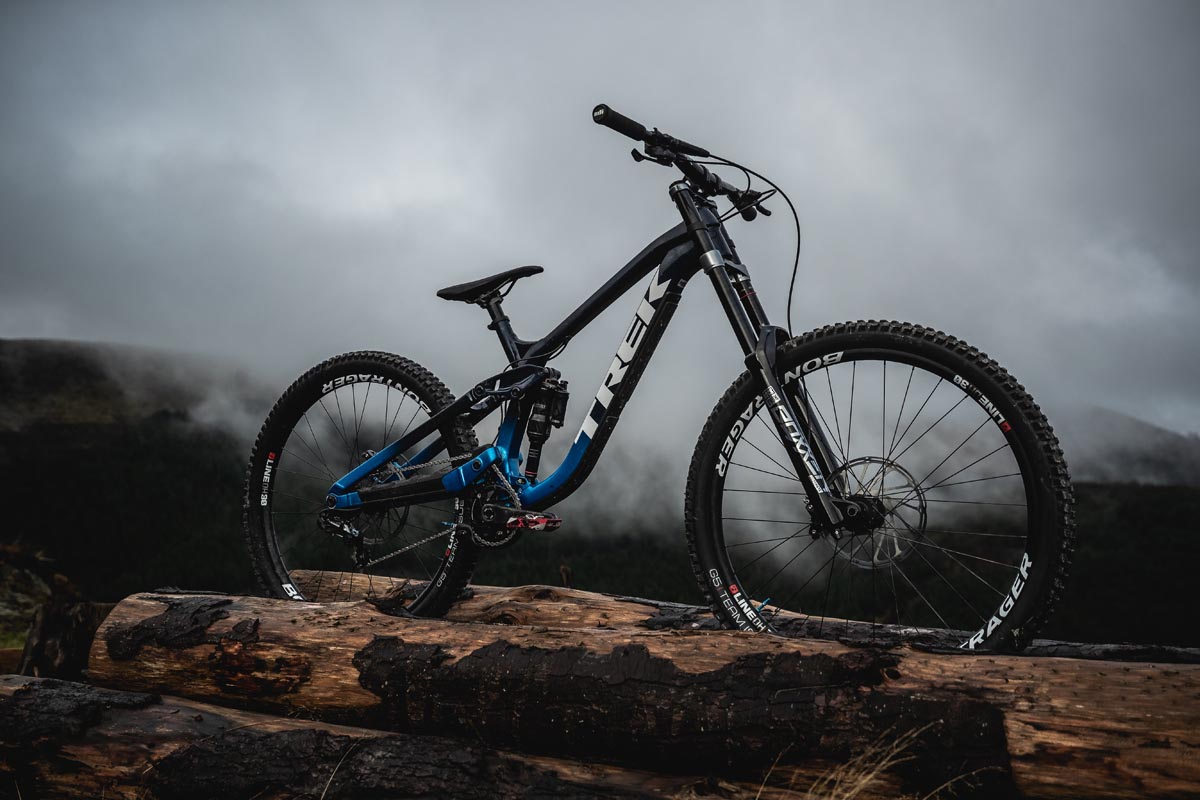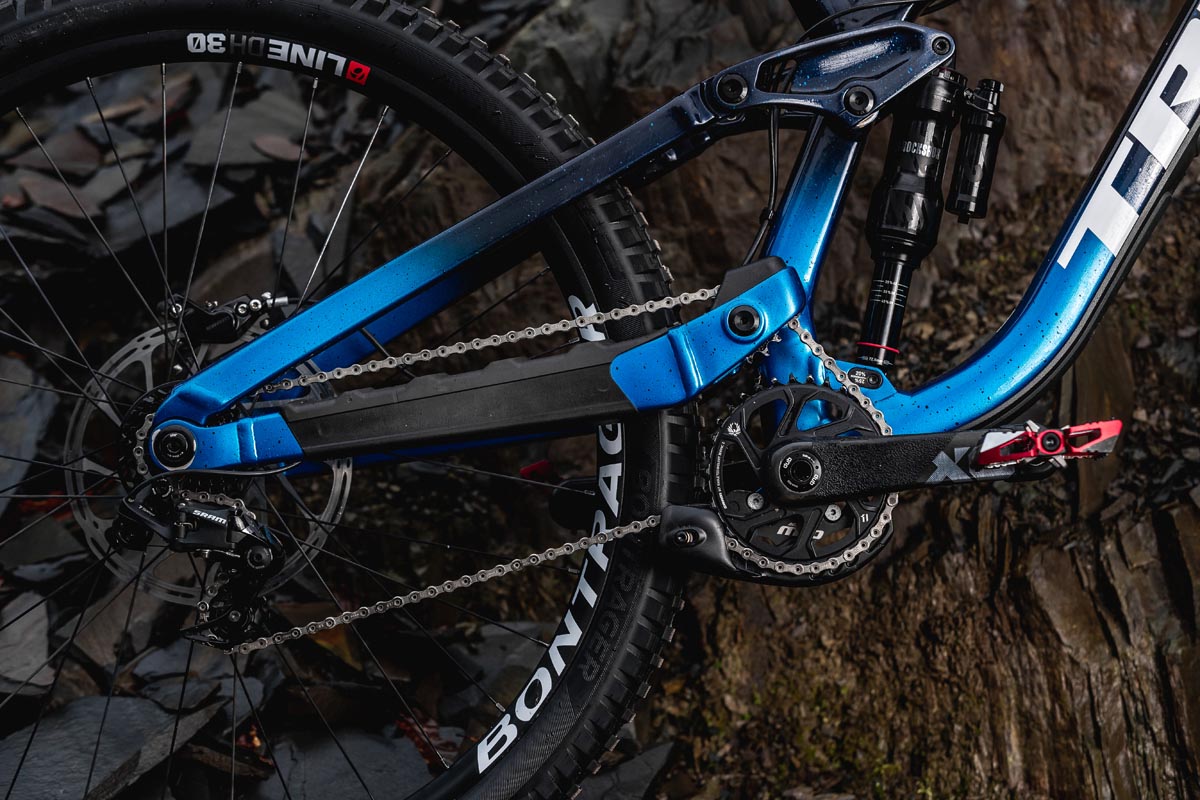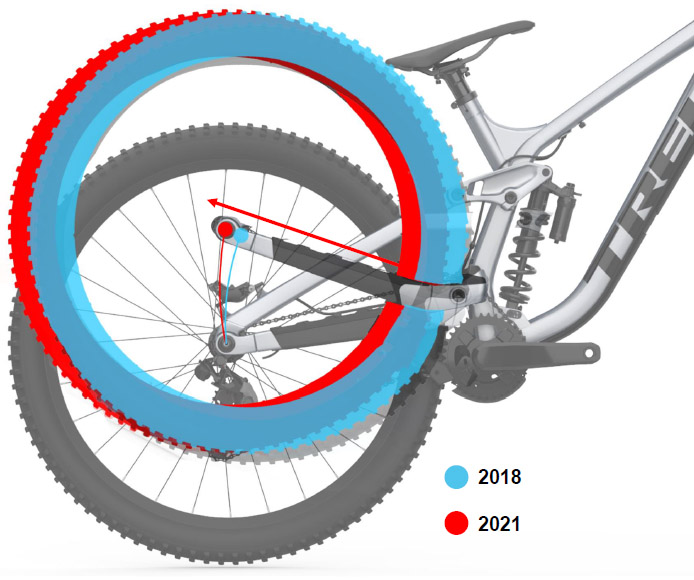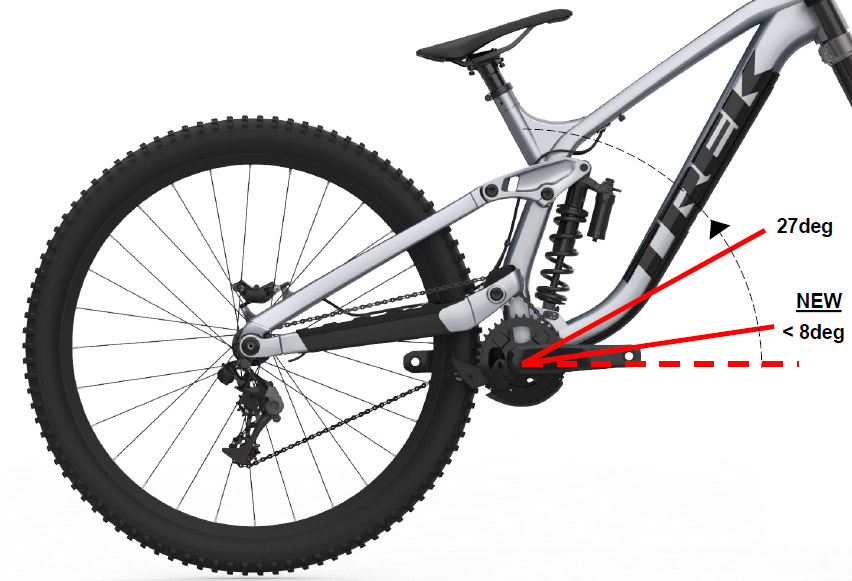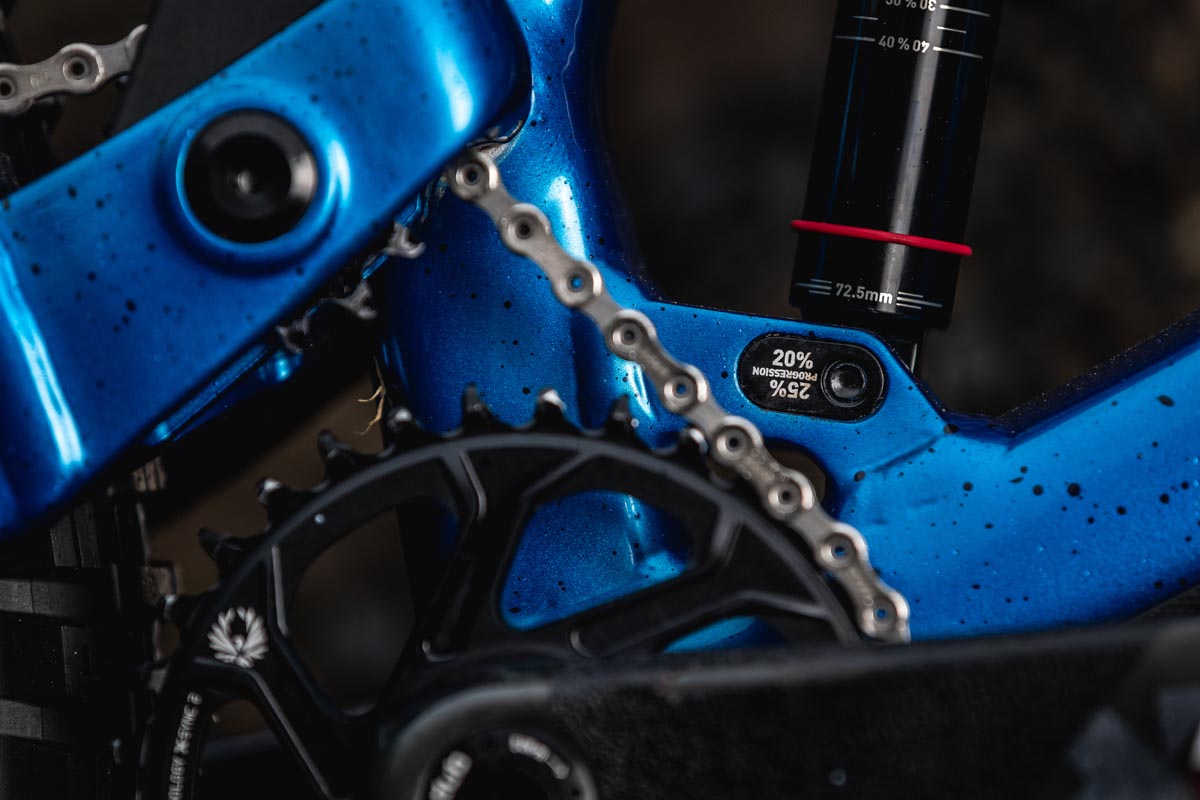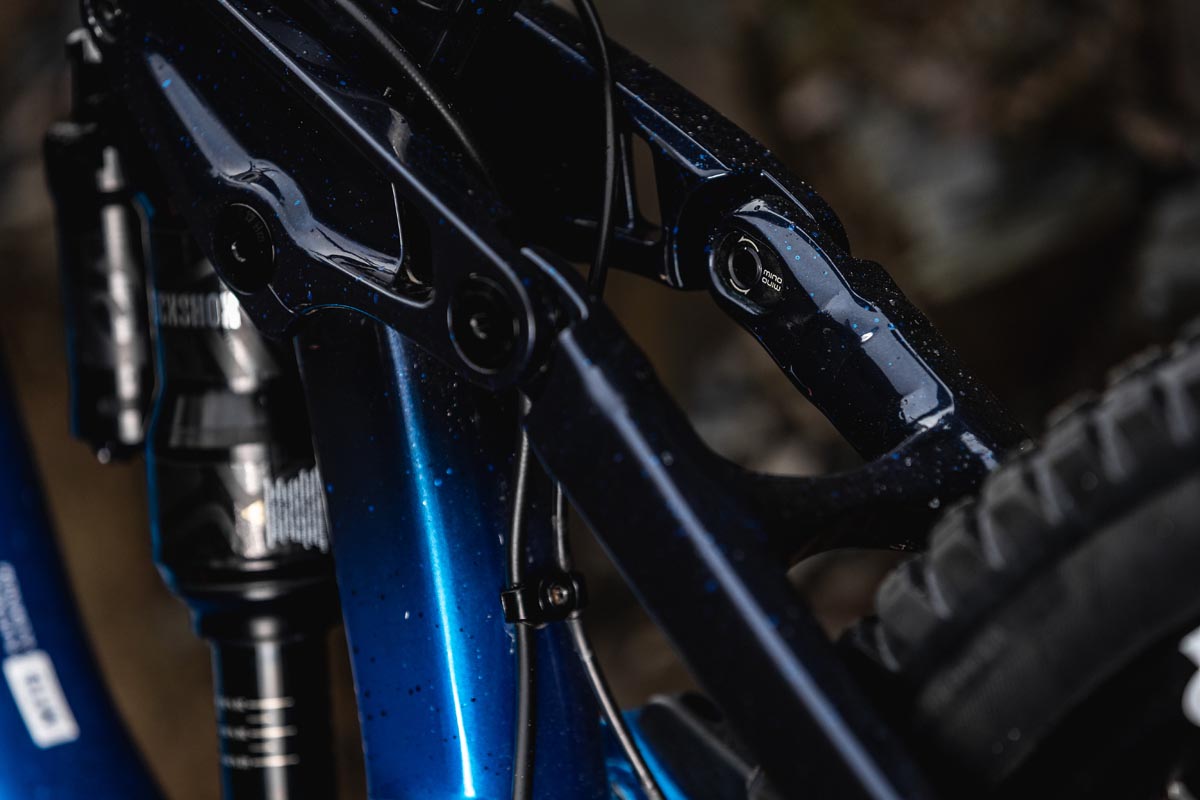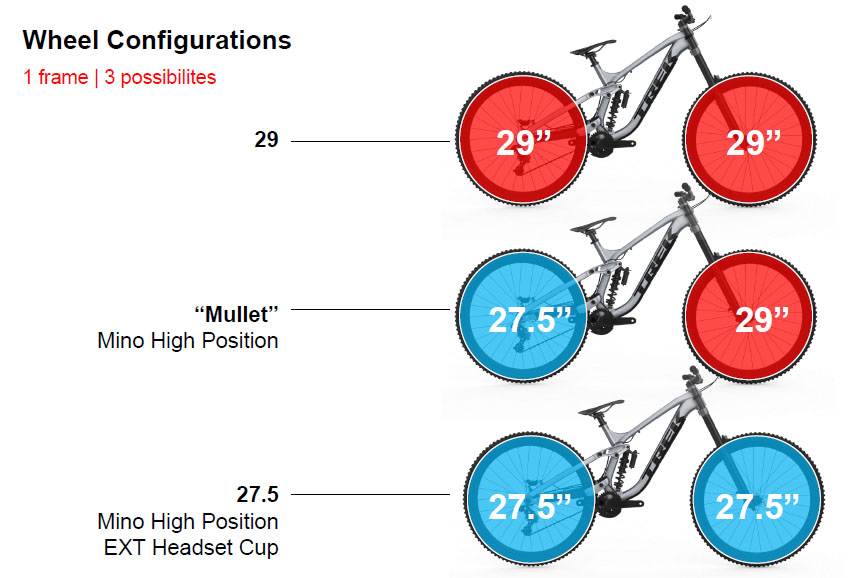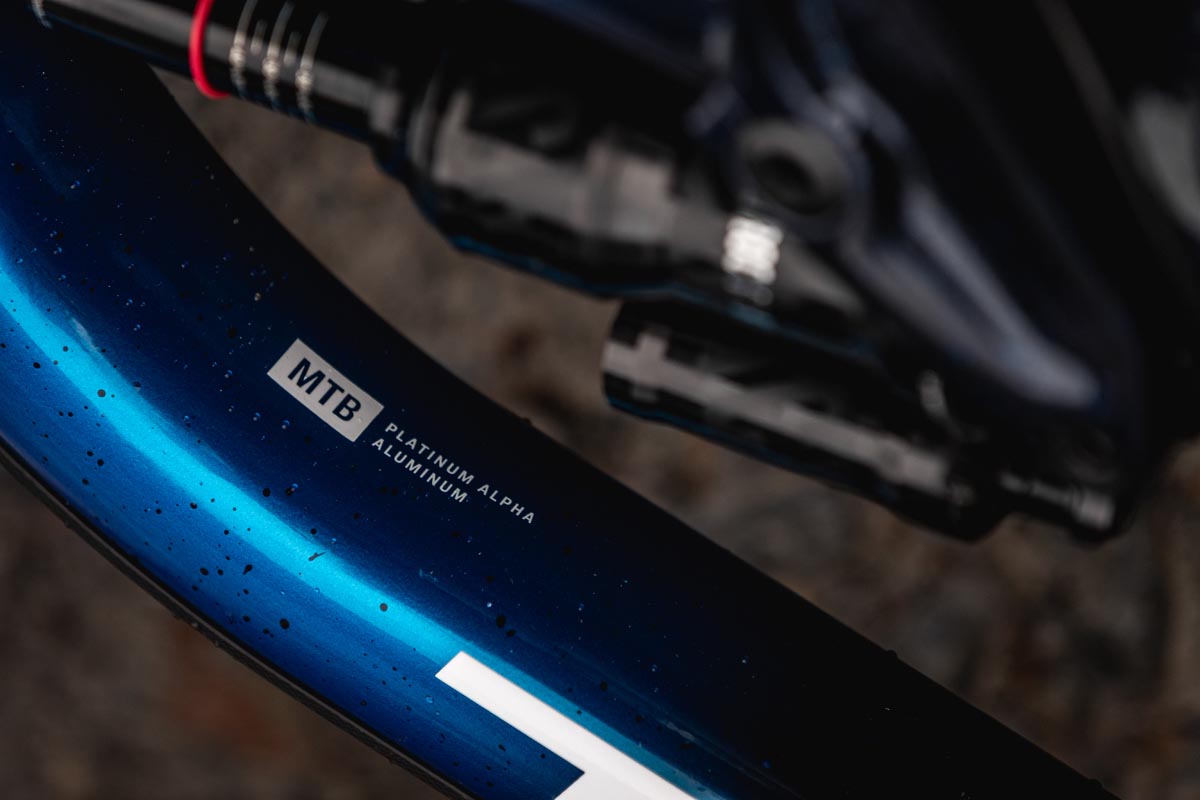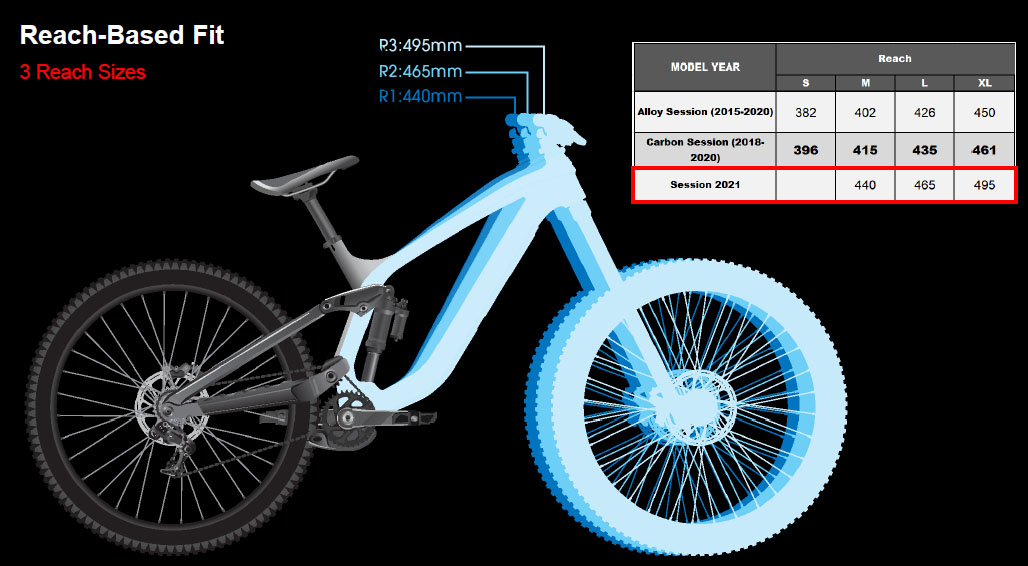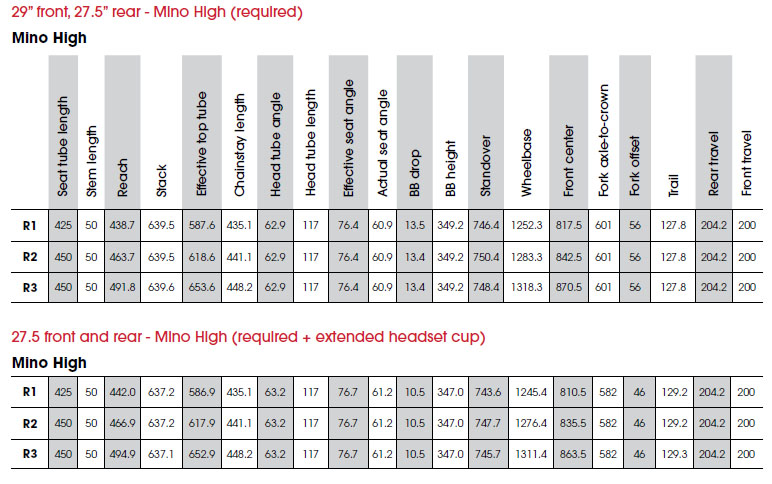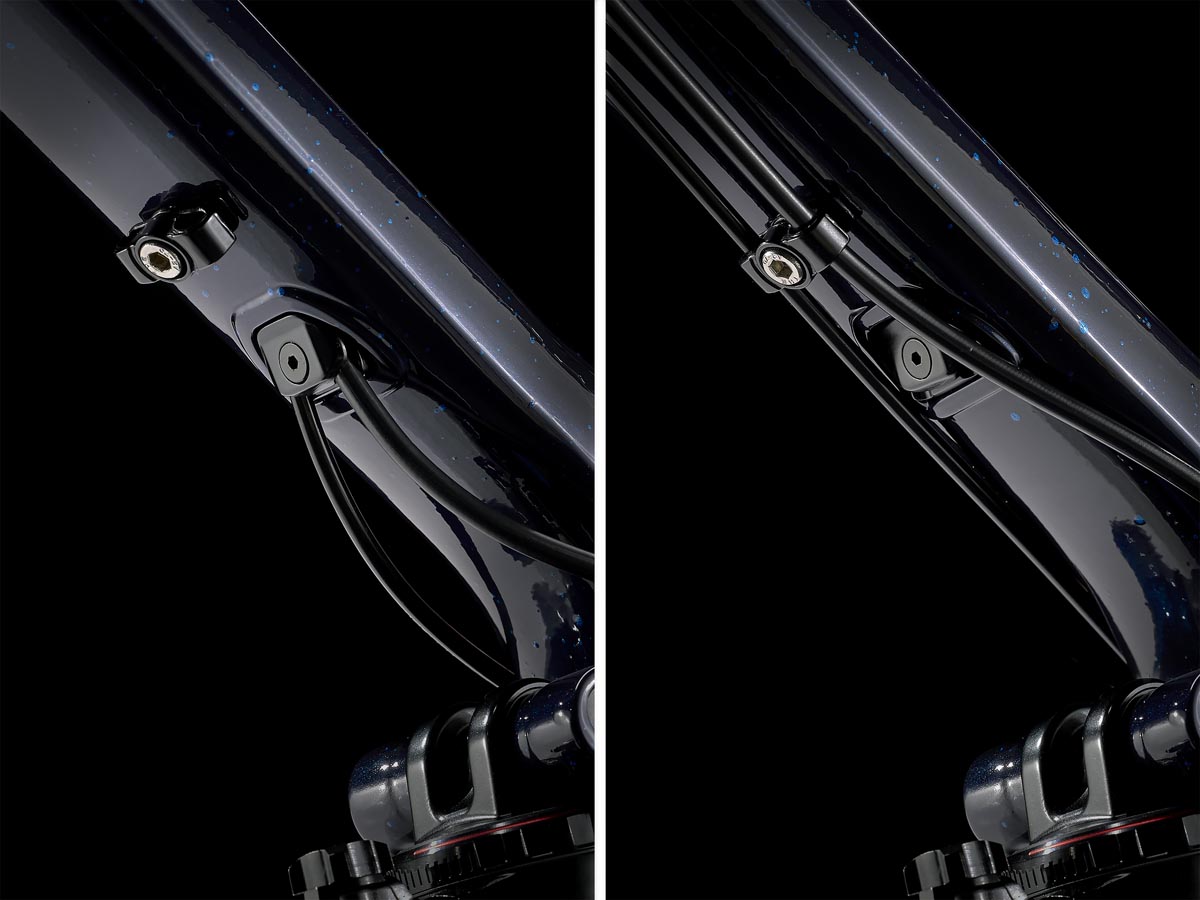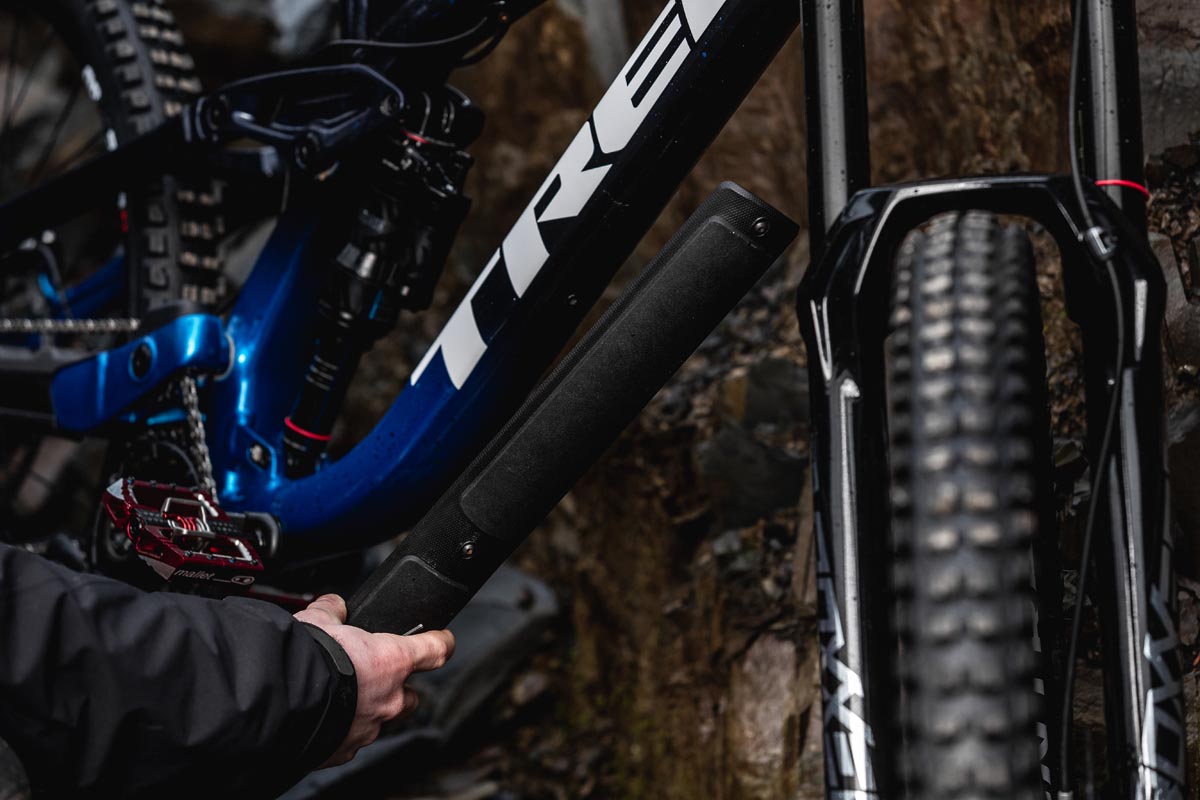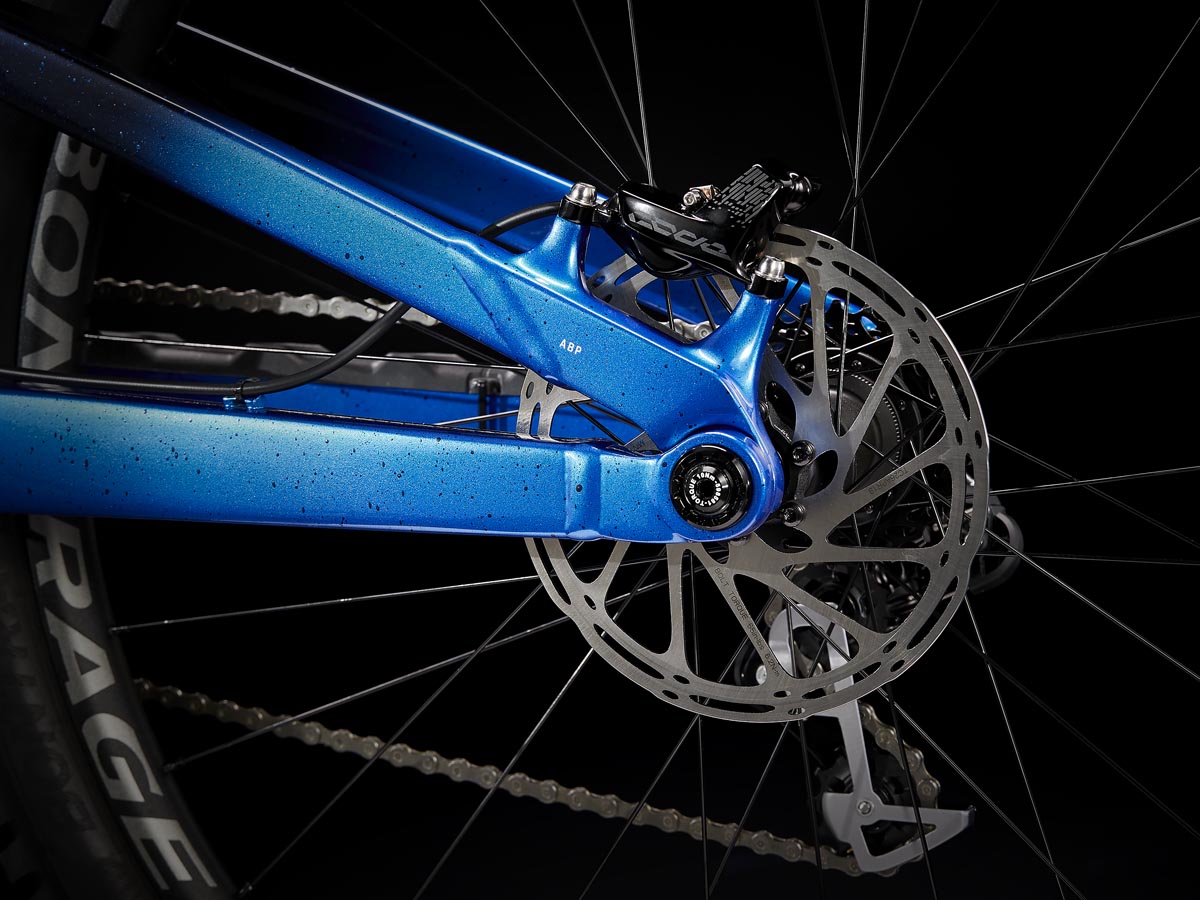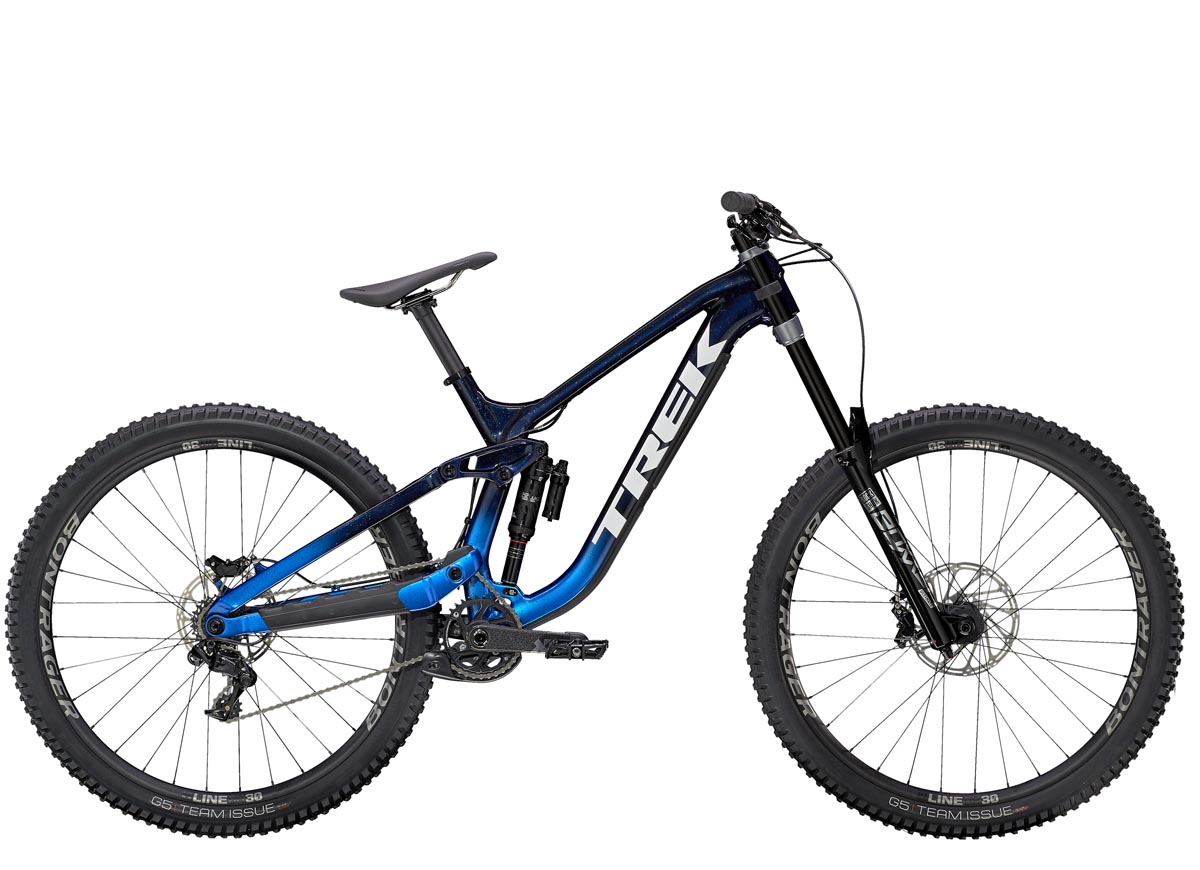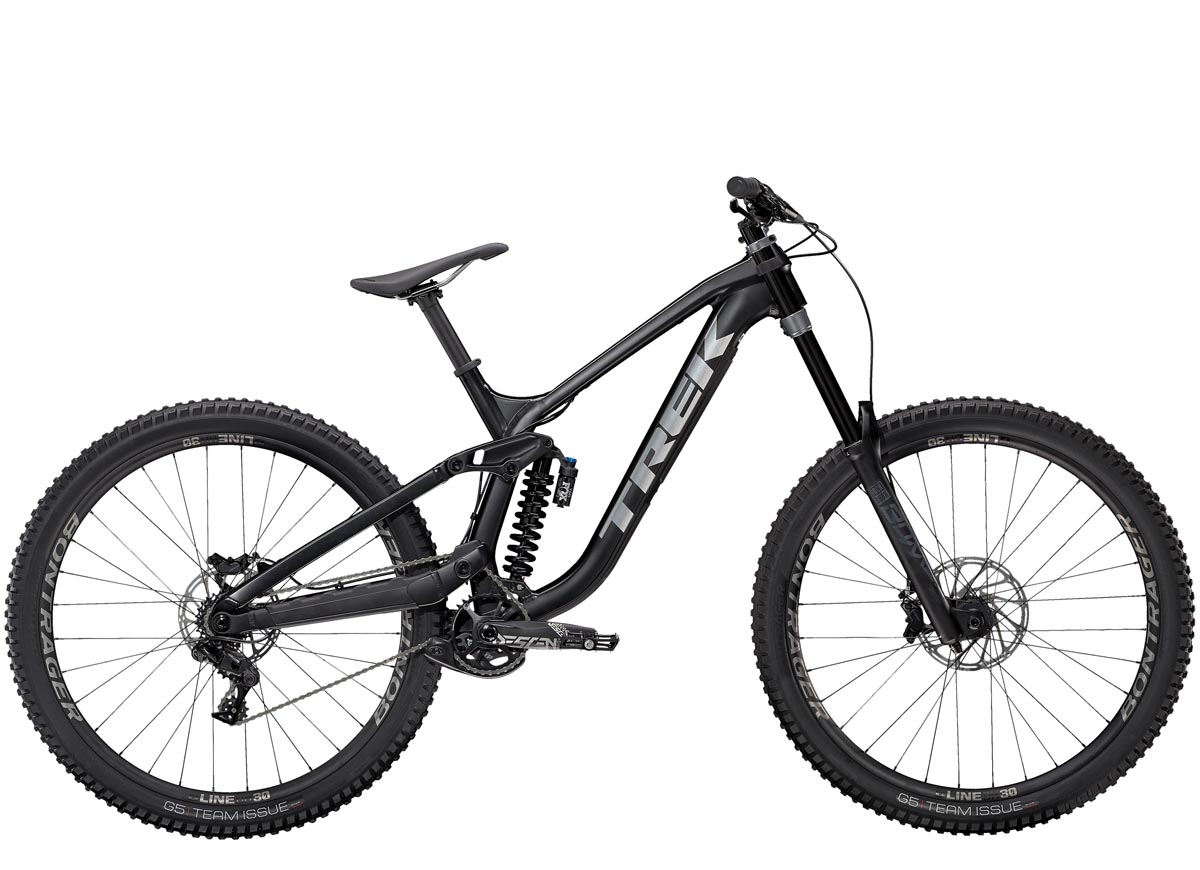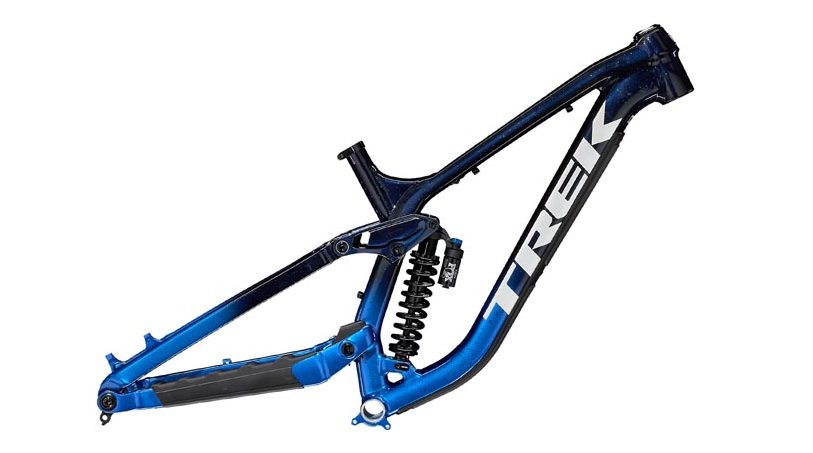The new Trek Session looks like a Session – only a mashup of the modern bikes, and the Session 10 from 2006. That’s because Trek has gone back to their roots of using a high pivot design, first with the Trek Diesel, then the Session 10. But with the Session 8 introduction, Trek changed almost everything with the design, adding all of their new technologies. That new Session was a game changer for Trek and led to many wins under legends like Tracey Moseley, Aaron Gwin, Rachel Atherton, and more.
Now though, Trek has decided it was time to go back and look into the benefits of a high pivot system. Specifically, the benefits of a more rearward axle path. The pivot location causes the wheel to move in a bigger arc, up and away from the bike which gives the wheel more time to get over a bump smoothly. You end up with a smoother suspension response, better traction, and a bike that carries more speed through rough sections.
Idler Pulley
But – one of the downfalls of a high pivot design has always been the amount of feedback at the pedals, or pedal kickback. Basically, as the suspension compresses, it would pull backwards on the chain which cause the cranks to rotate backwards.
To eliminate the issue, Trek uses a fairly common solution with an idler pulley located above the crank. The result is the new bike only has 5-8° of pedal kickback, whereas the 2018 Session without a high pivot design had 15-27° of kickback.
Progressive suspension – you choose
Additionally, the new Session gets more suspension options with a Suspension Mino Link. Not to be confused with the Mino link for the geometry, the Suspension Mino Link allows riders to choose between a 20 and 25% leverage rate. On previous Session models, this was something done for their pro riders, but only through custom links and shock extenders. Now, Trek is providing the option to all riders allowing you to tune the frame for rider preference, course needs, air vs. coil shock, etc. Apparently, Trek’s racers all went straight for the 25% setting and left it there.
All the wheel configurations
Speaking of Mino Links, the combination of the geometry Mino at the seatstay pivot plus the EXT Headset Cup means the Session can run any modern wheel size combination. The bikes will ship in a stock configuration with 29” wheels front and rear. But customers will have the option of running a mullet set up with a 29” front and 27.5” rear with the Mino Link in the high position, or dual 27.5” wheels with the Mino in the high position plus the EXT Headset Cup (while using the same fork).
With both wheel sizes, the maximum tire clearance is 2.6″.
Aluminum only?
If you’ve gotten this far, you may have noticed that the frame is only offered in aluminum. During testing, Trek claims that their riders actually preferred the response of the aluminum over the weight savings of carbon. Will that mean that we won’t see a carbon Session again in the future? We’re not so sure, but for now, it’s aluminum only.
New Geometry
The Session also gets a big update in terms of sizing. Now moving to a reach-based sizing system, the Session will be offered in three sizes, R1, R2, and R3. Trek says that the bike fits the same range of riders as before, but they did it with only three sizes. They also added “size specific chainstays” – only all three sizes use the same chainstay. That’s possible since the effective chainstay length is changed by the position of the pivot.
Frame Details
Even though it’s aluminum, there are still plenty of clever frame features on the Session that riders are sure to love. For those that love the look and benefits of internal cable routing, it’s there. But if you prefer external routing, that’s an option too.
A new full length Downtube Armor has been created with dual density protection that is also removable. That allows for easy replacement should it be damaged.
The same goes for the improved chainstay guard which is dual density and removable.
Still utilizing Trek’s ABP rear dropout design, the frames include a 180mm post mount brake that can run up to a 220mm rotor with the right adapters. Additional details include a 2-bolt ISCG 05 chainguide mount, an 83mm BSA threaded bottom bracket, and 56.5mm chainline capable of running 32-38t chainrings.
Models/Pricing
The Session will be offered in two complete bikes, the $6,999.99 Session 9 is the WC replica bike, and the $4,999.99 Session 8 is a more affordable starter bike with all the same features of the higher end frame, but more affordable parts.
A frame only with a rear shock will also be an option for $2,999.99, which includes the extended cup needed for a full 27.5” build. If you purchase a complete bike as a 29er and want to switch to 27.5” wheels, you’ll have to purchase the EXT Headset Cup as an aftermarket part.
